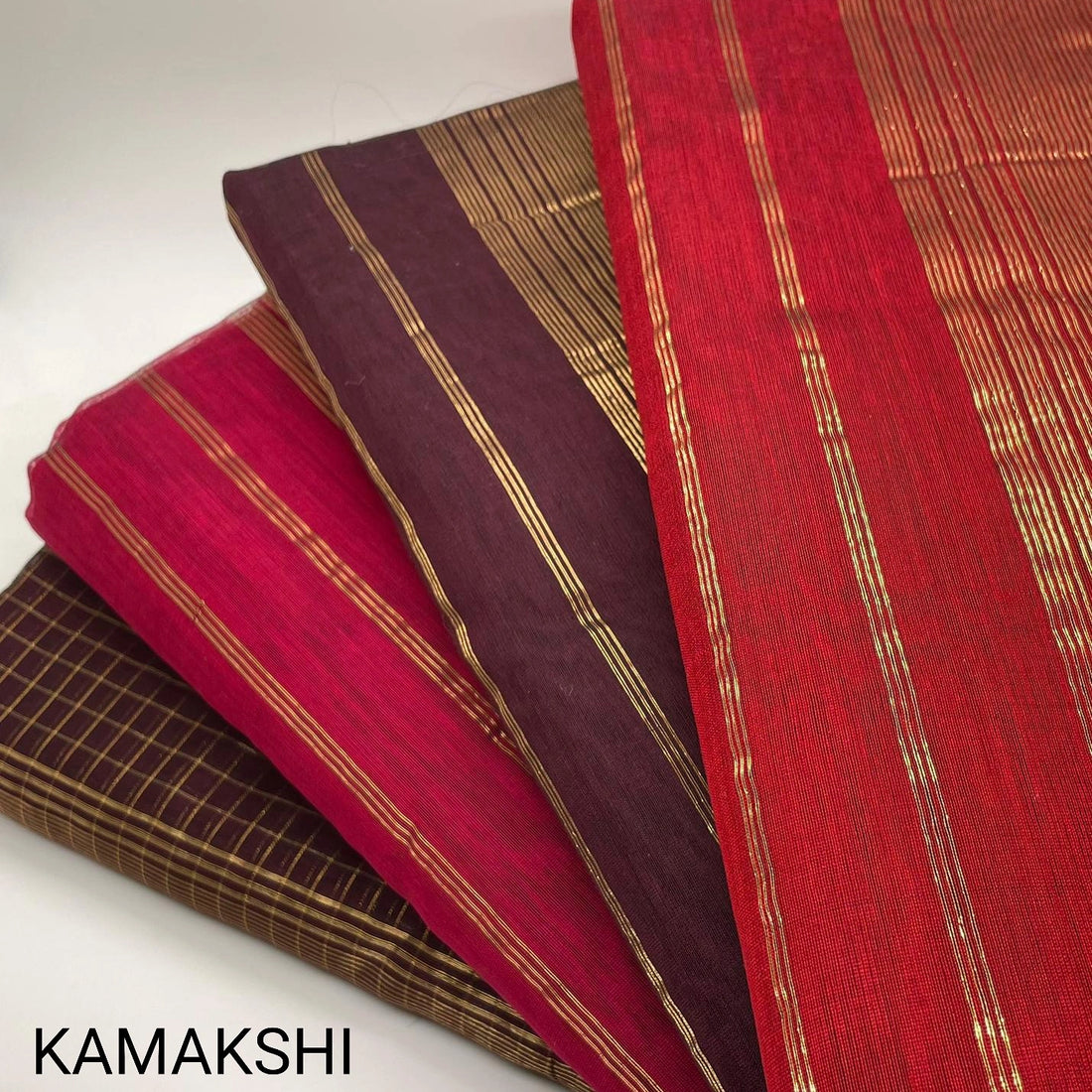Maheshwar is a town in Karghone district of Madhya Pradesh, central India. The town lies on the north bank of River Narmada.
Maheshwar has been a centre of handloom weaving since the 5th century. Maheshwar is the home of one of India's finest handloom fabric traditions. It rose to popularity under the rule of strong maratha leader Queen Devi Ahilya Bai Holkar. Ahilya Bai wanted royal gifts for the royal guest. Hence weavers from Mandu and Surat were hired and Maheswari saree and turban were weaved. It is said that Ahilya Bai herself designed the first saree and was gifted to royal guests.
Maheshwari Cotton - native to the town of Maheshwar, one of the finest textile found in India, are handwoven with a technique that has been preserved and handed down from the 5th century. The most notable quality of Maheshwari saree is a combination of silk and fine cotton yarn. The silk yarn is laid out in warp, known as tana and fine cotton yarn in weft known as bana. The motifs are woven using pure gold zari. The speciality of Maheshwari saree is its reversible border known as bugdi which can be worn on both sides.
Maheshwari's exquisite weave holds inspirations from the temple city, like the walls of the Fort of Maheshwar. The popular motifs usually woven are rui phool (cotton flower), diya(lamp), chameli(jasmine), hans(swan), Narmadji/leheriya (inspired by river Narmada), arrowhead, karvat(inspired by wood saw), jugnu zari(fireflies), baadal(clouds), jharoka(akin to lattice windows), eent(brick pattern), chattai(mat-like), heera(diamond) and many more.
The Maheshwari silk sarees were initially made only in red, maroon, black, purple and green but today to cater to the demand of time, these sarees are also made in lighter shades.
Maheshwari sarees are extremely light in weight and soft. They carry such a grace and elegance in a timeless weave!

